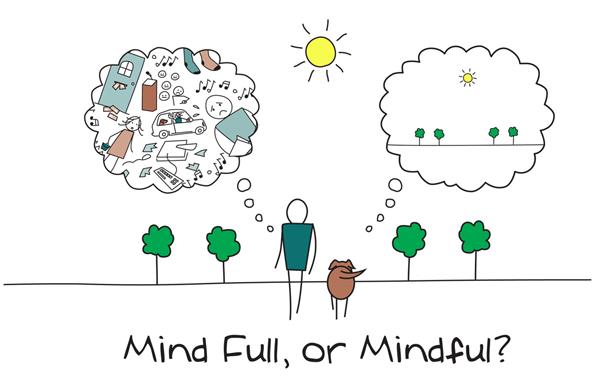- Arlington High School
- History of Mindfulness in Education
Mindfulness Room
Page Navigation
How Did We Get Here?
-

Mindfulness, as it exists in today's day and age, in our school systems, is secular in nature. In other words, it is not affiliated in any way with religious contemplative practices. Secular mindfulness has been around for 40 years and there is a tremendous amount of research and data that supports its overall benefits to daily living. Much of this research indicates that mindfulness is especially helpful in improving focus and emotional regulation, both of which are skills that contribute to academic success.
As we have stated on our "Welcoming Page", mindfulness means paying attention, on purpose, to the present moment, non-judgmentally. This working definition stems from the work of Jon Kabat-Zinn who, in 1979, developed Mindfulness Based Stress Reduction (MBSR) while working with chronic pain patients at UMass Medical School. He was attempting to find a way for these patients to cope with their chronic pain by shifting their attention and focus away from the physical and emotional sensations accompanying their conditions. He was research based and he manualized MBSR so that it could be replicated.
Taking a stronghold in the healthcare industry through the 1980's, MBSR began emerging in Mental Health in the early 1990's, when Marsha Linehan developed Dialectical Behavioral Therapy (DBT) while working with patients who were suicidal. DBT has 4 Models, the first of which is Mindfulness and it resonates as the core model for the other 3 within that approach. Out of DBT there also came Mindfulness Based Cognitive Therapy (MBCT) during the 1990's, and the benefits of mindfulness were also being seen in patients/clients with emotional angst, self-injury, substance use, depression, and anxiety.
In the early 2000's Mental Health professionals, who had experience with, and exposure to Mindfulness, began to come into existence in the education system. School Social Workers, Psychologists, and Teachers who had been trained in mindfulness, began using mindfulness approaches in school classrooms and even were using lesson plans to teach things like Mindful Breathing and Mindful Movement (along with other mindfulness-based curriculum) as a way to face the modern world Central Nervous Systems (CNS) set-point, which is said to be just beneath the "Flight vs. Fight" response. Noticing how the "little things" are at times producing "BIG" reactions, our hope here in Arlington is to teach students how to create the space needed to choose a response rather than bend to the "knee-jerk" reaction.
For the staff currently overseeing the daily operation of the Mindfulness Room at AHS, we are committed to our own formal, personal practice of intending to sit, and breathe, and be for at least 20 minutes per day. Whether that comes in one 20 minute "chunk" or five 4 minute sits throughout the course of the day, it is our commitment to ourselves in this formal way that allows us to teach our students and staff with authenticity and a genuine openness and curiosity to explore with our students (and staff for that matter).

